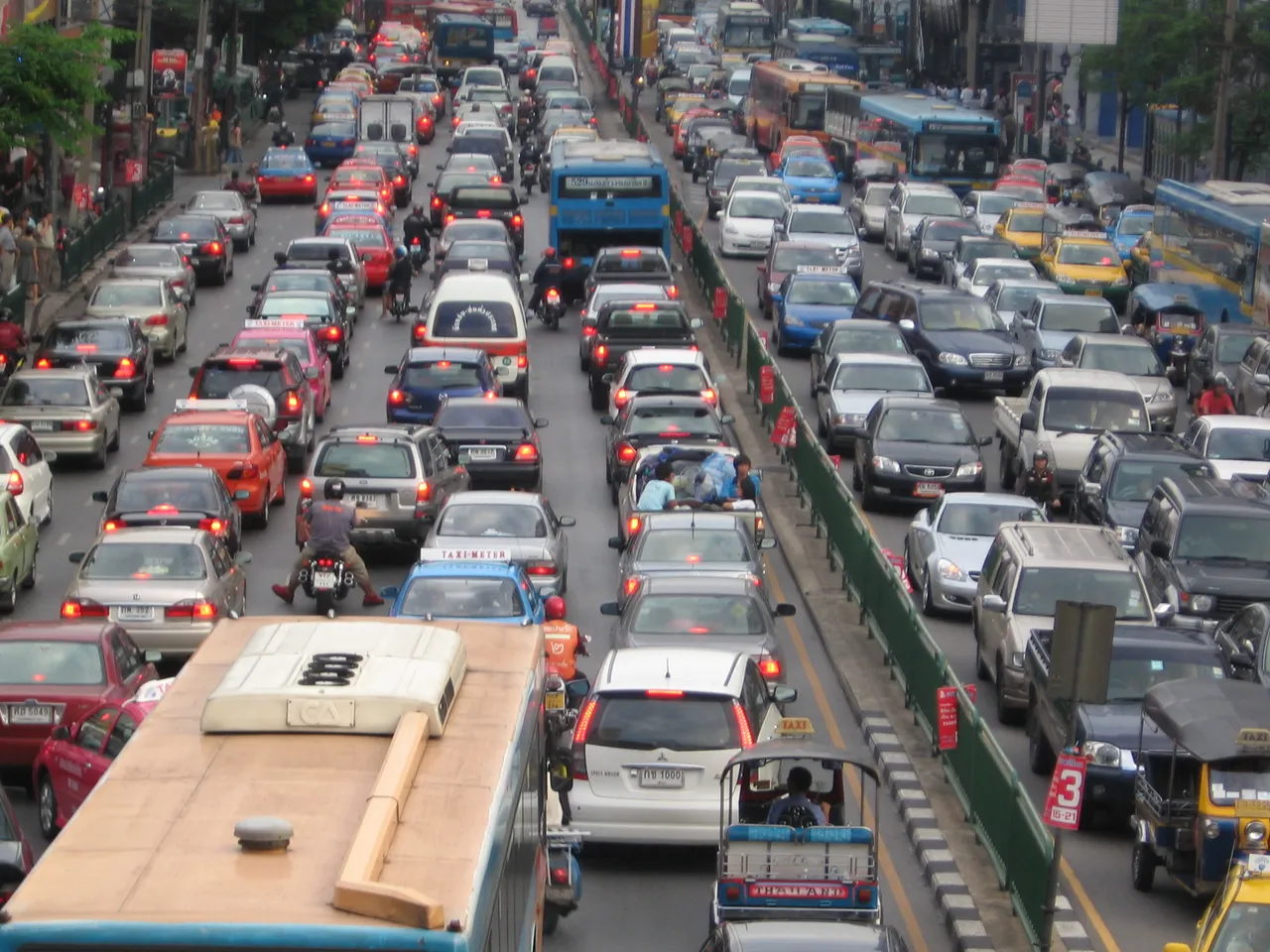
Traffic refers to the movement of vehicles, pedestrians, and other forms of transportation along a road, highway, or other transportation route. It can also refer to the congestion or backups that occur when there are too many vehicles trying to use the same road at the same time.
Traffic can be composed of various types of vehicles, including cars, trucks, buses, motorcycles, and bicycles. It can also include pedestrians, skateboarders, and other non-motorized forms of transportation.
Traffic flow is typically managed by traffic signals, signs, and road markings, which help to regulate the movement of vehicles and ensure that traffic moves safely and efficiently. Traffic laws, such as speed limits and right-of-way rules, are also in place to help maintain order and prevent accidents.
Traffic congestion can occur for a variety of reasons, including:
- Overcrowding: When there are too many vehicles on the road at the same time, it can lead to congestion and slow down traffic.
- Accidents: If there is a collision or other incident on the road, it can block traffic and cause congestion.
- Roadwork: Construction or maintenance on the roads can narrow lanes or close roads entirely, leading to congestion.
- Inclement weather: Weather conditions like rain, snow, or fog can make it difficult for vehicles to safely navigate, leading to slower traffic.
- Poor road design: If the design of the road is not optimized for traffic flow, it can lead to congestion and other issues.
Traffic congestion can have negative impacts on transportation, the economy, and the environment. It can lead to increased travel times, fuel consumption, and air pollution, as well as decreased productivity and economic growth.
There are various ways to manage traffic and alleviate congestion, such as:
- Improving public transportation: Providing reliable and affordable public transportation options can encourage people to leave their cars at home, reducing the number of vehicles on the road.
- Encouraging alternative modes of transportation: Promoting the use of bicycles, walkable paths, and other non-motorized transportation can also reduce the number of vehicles on the road.
- **Implementing traffic management strategies: **This can include optimizing traffic signal timing, implementing ramp metering, and using dynamic traffic management systems to adjust traffic flow in real-time.
- Investing in road infrastructure: Adding lanes, improving road design, and maintaining roads can help to increase traffic flow and reduce congestion.
- Implementing congestion pricing: Charging fees for using certain roads or areas during peak hours can help to reduce traffic congestion and generate revenue for transportation improvements.
Overall, managing traffic flow and reducing congestion is a complex challenge that requires a multi-faceted approach, involving a combination of transportation infrastructure, technology, and behavioral changes.
"Traffic" can hold other, depending on the context. Let's delve deeper and uncover its diverse spectrum:
General Definition:
- Movement of Things: In its most general sense, traffic refers to the movement of things from one place to another. This can encompass physical objects like humans, vehicles, and goods, or even abstract concepts like data or information.
Types of Traffic:
- Vehicle Traffic: This is the most common image that comes to mind - the flow of cars, trucks, motorcycles, bikes, and any other motorized vehicles on roads or highways. We witness it as congestion during rush hour, the smooth sail on open highways, or the chaotic frenzy of parking lots.
- Pedestrian Traffic: The movement of people on foot forms another major type of traffic. We navigate bustling sidewalks, traverse crosswalks, and navigate throngs at events, all contributing to the pedestrian flow.
- Public Transport Traffic: Buses, trains, subways, and trams create their own distinct traffic, transporting large volumes of people in organized routes. Efficiency and punctuality are key players in keeping this flow smooth.
- Air Traffic: The skies come alive with the movement of airplanes, guided by complex systems to ensure safe and efficient travel. From commercial) jets crisscrossing continents to helicopters buzzing overhead, air traffic plays a vital role in our connected world.
- Water Traffic: Rivers, canals, and oceans witness the flow of ships, boats, and barges transporting goods and passengers. From container vessels carrying global trade to leisure ferries, water traffic adds another dimension to the movement of things.
- Data Traffic: In the digital realm, information flows through the Internet like a modern-day superhighway. Data packets carrying emails, messages, and website content form a constant stream, shaping our online experiences.
Beyond the Flow:
Traffic isn't just about the physical movement itself. It encompasses the infrastructure that supports it, like roads, bridges, ports, and communication networks. It also involves complex systems for managing and regulating the flow, including traffic lights, air traffic control, and internet protocols.
Understanding traffic patterns, predicting congestion, and optimizing movement are ongoing challenges faced by planners, engineers, and researchers. It's a dynamic domain that constantly evolves with new technologies and changing transportation needs.
